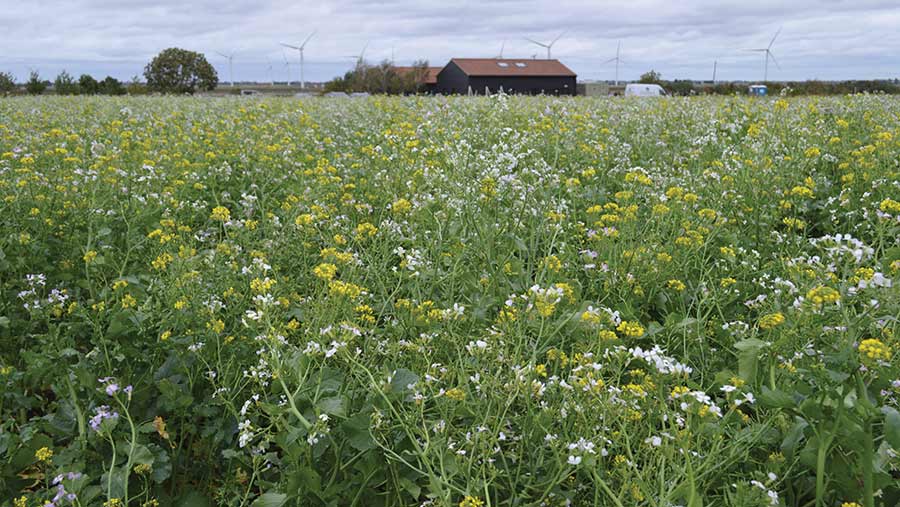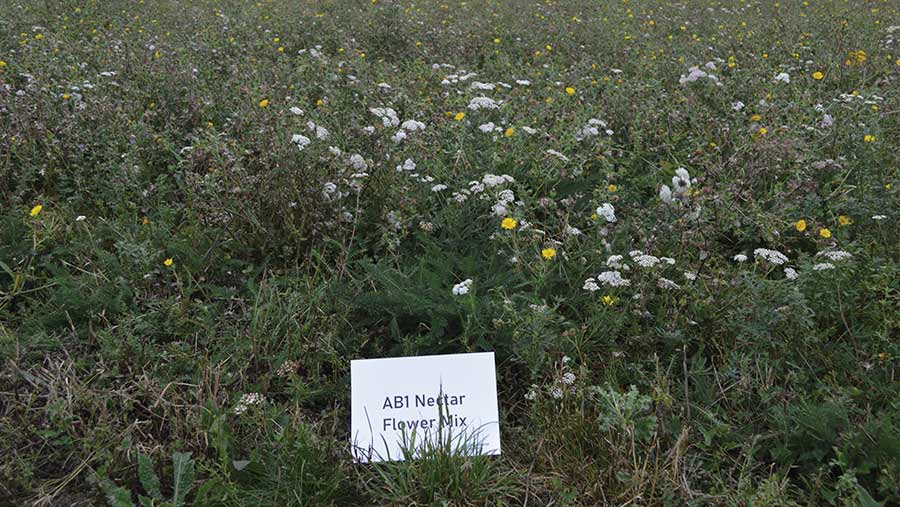SFI 2023: The support options for arable growers
 © MAG/David Jones
© MAG/David Jones Arable growers are being encouraged to enter the new 2023 Sustainable Farming Incentive (SFI) for England as it is simpler and more flexible than previous financial support packages.
The new schemes run for three years and can be increased in scope or decreased by 50% over their lifetime.
This compares with Countryside Stewardship (CS) schemes, which run for five to 10 years with fixed actions.
Georgina Wallis, head of environmental services at agronomy group Hutchinsons, says growers who looked at SFI 2022 or CS and decided it was not for them, might find SFI 2023 an interesting option.
“SFI 2023 is quite different and more appealing. It gives reasonable payouts – not to match the old Basic Payment Scheme [BPS], but it’s definitely worth considering,” she tells Farmers Weekly.
See also: Defra’s 2023 SFI scheme opens for applications in England
Three plans
Three assessment plans looking at soils, integrated pest management (IPM) and crop nutrition are relatively straightforward, and together with cover crops and grass buffer strip, they are actions many English growers are already taking.
These initial actions can easily be topped up with flower-rich grass margins and herbal leys where applicable, along with no-insecticide and companion cropping options.
A starting point for SFI 2023 could be to take up options such as creating a soil management plan (SAM1), which pays out £5.80/ha plus £95/agreement, a plan for IPM for £989/year and a strategy for crop nutrient management at £589/year.
After these three plans, Georgina suggests growers could add grass buffer strips from 4m to 12m on arable land (AHL4), which pays £451/ha, which is also something many growers may be already doing.
Another fairly straightforward option could be multispecies cover crops (SAM2), paying £129/ha, as many growers are already using winter cover crops.
This is a similar payment to option SW6 in CS but, like with many similar payments for SFI and CS options, the exact details can differ.
BPS replacement
The SFI is one part of the new Environmental Land Management (ELM) scheme, which is replacing BPS.
The last full BPS payment was £233.30/ha in 2020 and these payments are being gradually cut, with the last payments made in 2027 and gone completely in 2028.
Under the initial SFI, there was an arable soils standard with an “intermediate” annual payment of £40/ha.
This included meeting levels of winter cropping and cover cropping, which many experts thought most arable growers would qualify for without heavy expenditure.
But this soils standard was swept away in SFI 2023, leaving many growers having to reformulate their plans for the current season.

© MAG/David Jones
Cover crops
Under the new options, a lot of attention has been focused on cover crops, including species mixes and their benefits in terms of improving soil health.
Alice Cannon, an agronomist with Farmacy which is part of the Hutchinsons’ group of companies, says most of her company’s core cover crop mixes contain the same eight species, but at different rates to reflect the aims of cover crops – whether for rooting, nitrogen fixation or grazing.
“The higher the diversity, the lower the risk of pests and diseases in the following crop, while the cover crops will improve the soil,” she says.
Alice highlights some of the key species that can be included in a cover crop mix, including brassicas such as radish and legumes such as crimson clover.
Linseed has a very fibrous root mass which spreads well through the upper soil layer. It can help open up heavy clay soils while keeping together lighter sandy soils.
This can be used in combination with the deeper rooting brassica species tillage radish, which can store high quantities of nitrogen in its large taproot.

© MAG/David Jones
Scavenging for phosphates
Buckwheat is fast growing and good at scavenging for phosphates, so it can increase the availability of this nutrient around a crop’s roots.
It needs warm soils to establish and is killed by frosts, so it is popular in companion crops with oilseed rape.
White mustard is the fastest growing of the mustard species and provides good biomass and a strong taproot.
As it grows fast, it is useful as a catch crop, perhaps between two winter wheat crops, while the slower growing, less-fibrous brown mustard is better suited for cover crops.
Legumes such as crimson clover and berseem clover provide nitrogen fixation and further diversity of root growth, phacelia also helps diversify the rotation because it is not a cereal or legume, and sunflowers produce a very large and useful rooting system.
Farmers who grow brassicas as a cash crop, such as oilseed rape, may want to avoid brassicas in a cover crop.
Alice advises that no cereals are used in a cover crop mix as there will be plenty of volunteers from previous crops.
Top-up options
Georgina suggests once these options are taken up, there are other top-up actions growers could consider from the total of 23 available under SFI 2023.
One is flower-rich grass margins, grown in blocks or in-field strips, earning £673/ha. This is a similar payment to CS AB8.
Other options growers might consider include herbal leys (SAM3) paying £382/ha, or a similar payment to CS’s GS4, if there is livestock or access to livestock on an arable farm.
Companion crops such as buckwheat and berseem clover grown with oilseed rape, or wheat and beans grown together, or barley and oats together pay out £55/ha.
While the no-insecticide option of £45/ha could be applicable to, say, late-drilled winter wheat, Georgina warns growers to check out the risk-reward balance, especially for high-value crops such as sugar beet and potatoes.
Both speakers were attending a Hutchinsons open day entitled “Implementing the Sustainable Farming Incentive” earlier this month at Broadpool Farm, owned by PF England & Son, near Warboys in Cambridgeshire
Key options in SFI 2023 offer for arable growers |
||
| Actions for soils | ||
| SAM1 | Assess soil, test organic matter and produce a soil management plan | £5.80/ha and an additional payment of £95/agreement |
| SAM2 | Multispecies winter cover crops | £129/ha |
| SAM3 | Herbal leys | £382/ha |
| Actions for integrated pest management (IPM) | ||
| IPM1 | Assess IPM and produce a plan | £989/year |
| IPM2 | Flower-rich grass margins, blocks or in-field strips | £673/ha |
| IPM3 | Companion crop | £55/ha |
| IPM4 | No use of insecticides on arable crops | £45/ha |
| Actions for nutrient management | ||
| NUM1 | Assess nutrient management and produce a report | £589/year |
| NUM2 | Legumes on improved grassland | £102/ha |
| NUM3 | Legume fallow | £593/ha |
| Actions for farmland wildlife on arable land | ||
| AHL1 | Pollen and nectar flower mix | £614/ha |
| AHL2 | Winter bird food | £732/ha |
| AHL3 | Grassy field corners and blocks | £590/ha |
| Actions for buffer strip | ||
| AHL4 | 4-12m grass buffer strip | £451/ha |
| IGL3 | 4-12m grass buffer strip for improved grassland | £235/ha |
|
Note: In the full SFI 2023 there are also actions for moorlands, hedgerows, farmland wildlife on improved grassland and low-input grassland. These make up 23 options in full. In addition, there is an SFI management payment of £20/ha for the first 50ha entered into an SFI scheme. The Environmental Land Management scheme consists of three separate schemes: the Sustainable Farming Incentive, Countryside Stewardship Plus and Landscape Recovery. |
||

